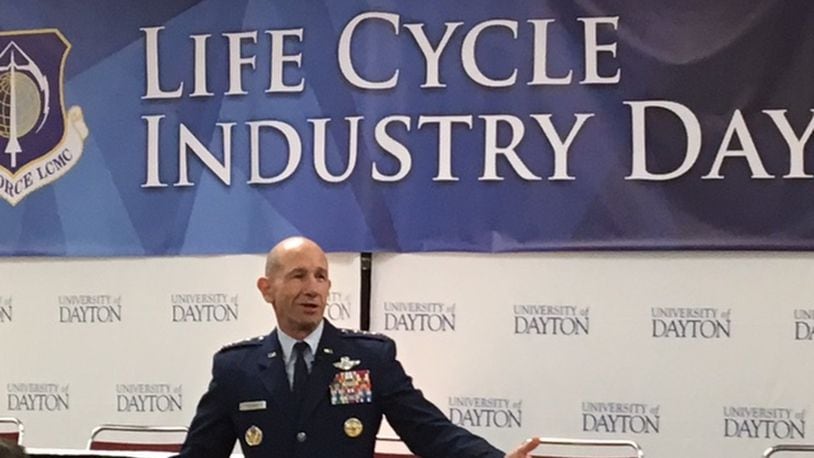Air Force leaders who also spoke warned of an impending technology gap with adversaries as threats worldwide grow and U.S. military superiority has eroded. The military branch expects to increasingly rely on multi-domain warfare in areas such as cyber and space in battles with future adversaries, officials said.
RELATED: Wright-Patt C-17 flies N.Y. rescue team to Puerto Rico after hurricane
The Air Force has fought in continuous combat since Operation Desert Storm 26 years ago and adversaries have adapted their strategies and weapons to face U.S. forces, according to Holmes.
“We face determined, smart, capable adversaries who have spent 26 years watching what we did and watching those Reagan-era systems,” he said.
Russia, China North Korea and Iran have engaged in unconventional or irregular warfare strategies, the four-star general said.
RELATED: Wright-Patt, AF leaders to meet with industry on defense needs
Russia has intervened militarily in the Ukraine and China has created man-made islands in the Pacific, among other actions in recent years. And adversaries have employed economic clout to strain U.S. relations with allies and attempted to split alliances, he said.
China and Russia have shown “they feel like they have room to operate in a military contest without triggering a response from us” as U.S. conventional capabilities have declined, he said.
“We’ve got to reset that deterrent capability if we’re going to regain our advantage in the air …” he said. “We’ve lived on that Reagan-era investment. Now, we’re going to have to find a new advantage.”
RELATED: Ohio leaders say funding will help protect Wright-Patt
The United States also must break the paradigm that it has two decades to develop a weapon system.
“We now live in a world where our adversaries are building new things every day faster than we thought they could,” he said.
The former F-15 fighter pilot urged re-examining lessons of the Cold War in the U.S. space race and the development of the F-117 stealth fighter as models on how the system can work.
“I think we need to convince the country that we need to spend the money to maintain that advantage,” he said.
The military uses an industrial age acquisition system created in the 1960s but needs one for the information age, Lt. Gen. Robert McMurry, commander of the Air Force Life Cycle Management Center, told attendees.
RELATED: Defense experts divided on how to handle North Korea
The air service has experimented with taking off-the-shelf technology, such as recent flight tests of light attack planes, as an alternative to expensive, years-long development, officials said.
Maj. Gen. William Cooley, commander of the Air Force Research Laboratory at Wright-Patterson, said experimentation, affordability and speed of development are three key target areas. “Today, we have become more risk averse and we’ve got to be willing to take more risks,” he said.
Col. Sean Larkin, commander of the National Air and Space Intelligence Center at Wright-Patterson, said more capable adversaries have challenged U.S. sanctuaries through tapping into commercially driven technology, such as drones, cyber operations, small satellites and artificial intelligence. Competing nations have invested heavily in new technologies such as hypersonics, also, he said.
About the Author
